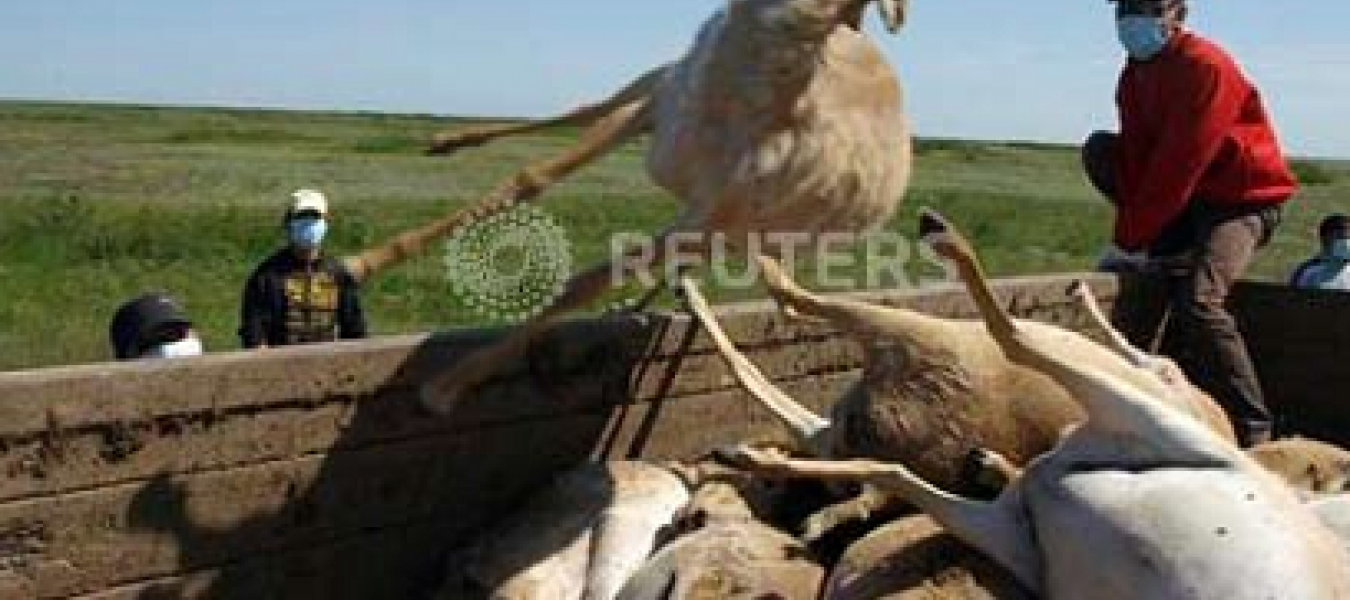Death on the Plains

Mystery surrounds deaths of thousands of rare saiga antelopes that roam Central Asia.
Conservationists trying to save one of the world's most endangered antelopes are to start a public awareness campaign in one of its key ranges following a series of setbacks in the past year. The strange-looking, trunk-nosed saiga, which once shared the steppe plains of Central Asia with mammoths and woolly rhinos, has suffered an estimated 95 per cent decline in numbers since 1995, largely due to uncontrolled poaching. There are only five wild populations in the world, and a number of recent events have conspired to increase the pressure on the species. The Russian population was hit by the very hard winter (and possibly increased poaching), while one population in Kazakhstan declined by 47 per cent last year, probably also because of poaching. Then, in May of this year, 12,000 saigas, mostly females that had recently given birth and their calves, were found dead in the Urals of western Kazakhstan. The animals had all died of pasteurellosis, a bacterium that lives naturally in healthy individuals but can cause illness and rapid death if the animal's immune system is compromised, either by another infection, poisoning, stress or malnutrition. Prof EJ Milner-Gulland, chair of the Saiga Conservation Alliance, said that it was still not known what the trigger for the outbreak had been, and because there had been no more deaths since the end of May, it was possible they might never find out. "The saiga population is very vulnerable to these mass mortality episodes because it has been so heavily depleted," she added. "You can't stop poaching with just law enforcement, you need local people's support too, and that's why a public awareness campaign is important." Michael Rank
